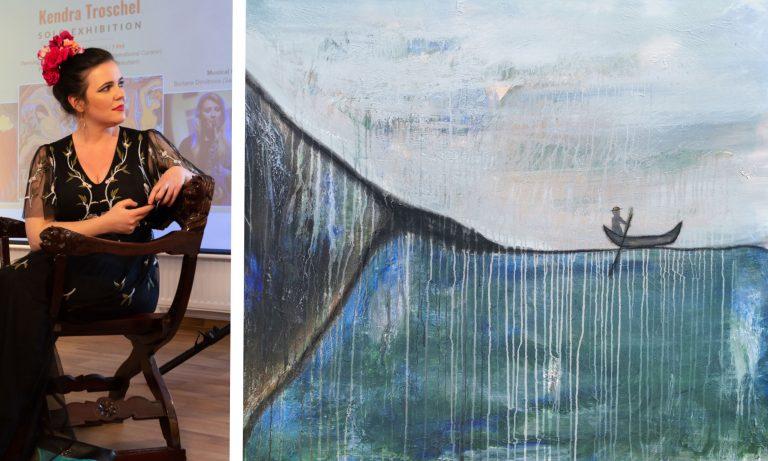The picture shows a bust-length portrait, done in watercolor, of a younger woman wearing what is the traditional regional folk costume of Bern – the Bernertracht or the Berner Sonntagstracht. Like many human characters drawn by Voegtli, she is looking directly at the viewer while her hair is partially covered with a black veil. In this portrait, all colors are deep. Light blue is added to the woman’s white blouse to gain depth, which matches with her eye color. Like her light blue blouse purled with white sleeves and buttoned with black, her light blue iris is surrounded with white corneas and black eyebrows. As a matter of fact, the portrait can be divided into two parts: The upper part comprises head, face, and partially covered hair and the lower part consists of neck, chest, and hands, all covered with dress. Her dress is white and light blue, and her veil is black with white freckles. Like Rembrandt, the painter seems to have forgotten about the background, half of which is painted light blue on the left and half is surprisingly left blank on the right. The only unhidden part of her body is the face, with lips and cheeks in crimson red; the right part is redder. In a harmony between form and content, her anger is shown in her frowning, which is traceable in the left red cheek and left garbled eyebrow. As such, her right cheek and eye seem to be calmer and whiter with no apparent anger. Here, the twofold characteristic of the portrait, which was previously hinted at while discussing about half dark and half white colors, becomes more significant in her face: half wrathful and half tranquil. It is mythologically meaningful that the left side of her face is angry, while the right side is filled with serenity. In one way or another, one can argue, based on her black veil and sad left side of her face, that the maid is mournful. Further, to maintain the twofoldness of his work, the painter gives the same amount of white color to her dress and also calmness to the other side of her face. This puts the viewer in permanent uncertainty. Now, what is uncertainty except an experience that is made up of two or more feelings and makes one unable to decide, like the uncertainty here between the maid and the viewer and, perhaps, the painter himself? Therefore, the content is a dubious maid or a woman with contrasting feelings of happiness and sadness, and form depicts this content by a face half calm and half angry. In addition, colors complement this theme, as mentioned above.
Sources:
Tavousi, Sohrab (2022) “Woman in a Traditional Dress”, in: JULIUS VOEGTLI: A Swiss Impressionist Pioneer, Edited by Nour Nouri & Davood Khazaie, Pashmin Art Publishers, pp.142-143.
Julius Vögtli (1879-1944) was a Swiss painter who played a key role in the development of impressionism in Switzerland. His landscape paintings, which often depicted the Swiss countryside, were characterized by their vibrant colors and expressive brushstrokes. Vögtli’s work helped to establish impressionism as a major artistic movement in Switzerland during the late 19th and early 20th centuries.



